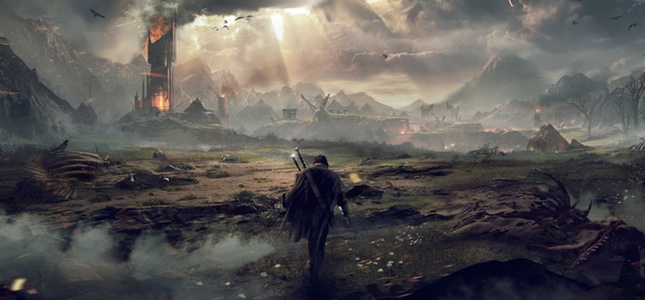
Release date
While Amazon initially had the game slated for the 31st December 2014, our assumption that this was just a holding date until the official release date had been announced went on to prove pretty accurate. Shadow Of Mordor went on to be released in the UK on the 3rd October 2014, a little after the US launch on the 30th September.
It was a multi-platform distribution with the game featuring on the Xbox ONE, PS4, PC, Xbox 360 and PS3. Sadly, the game didn’t see the light of a shadowy day on the Nintendo Wii U as the console continues to be shunned by big distributors, including Warner Bros, but it did make it out on Mac OS in July the following year.
Storyline
The plot for the game is a completely new story, built out of the brilliance of J.R.R. Tolkien’s legendary universe surrounding Middle Earth. It’s set between the events of The Hobbit, in which Sauron’s forces began to flex their might, and The Lord of the Rings where his full power was unleashed against Gandalf, the Ring Bearer and the armies of the west.
You play a ranger called Talion, who along with his family is killed by the legions of Mordor, and on his part the dark hand of Sauron himself. While his family perish, Talion is returned to life on Middle Earth as he turns out to be an undying spirit thanks to his connection to the Wraith of the Elven Lord Celebrimbor. With his new-found powers and revenge his only goal he sets out to bring down Sauron and his army.
Gameplay
The gameplay style is third person action adventure with some similarities to Assassin’s Creed 4: Black Flag. You’ll have a massive open world setting to roam around in to exact your revenge and free running skills to get around in impressive style with. The fight engine is fairly similar to both Black Flag and Ryse: Son of Rome, with slash, dodge and block tactics and an element of the cinematic finishing moves.
There are no firearms as such, although Talion does have a bow and arrows to use, along with his sword and dagger. However, the reborn Ranger does have a whole new set of Wraith powers to take on the might of Mordor, including being able to use it to identify enemies before you attack, stop them from a distance if they’re running away and control their mind through the influence of fear.
It’s this last element that creates the strategy element of the game, as you can build up a legion of turned enemies to help you progress in the game, which includes options to instigate a mass revolt, assassination mission or to spread the fear within the enemy ranks. It’s sort of hard to explain, so check out the gameplay walkthrough trailer below to get a better idea of what to expect.
The other significant addition to the gameplay is the Nemesis System, which sees enemies learn from their encounters with you and change their fighting style, as well as getting stronger if they manage to beat you or survive an encounter. This makes for the potential of evolving AI with developers, Monolith, talking up the fact that each subsequent fight will be different for you.
Graphics
Obviously the release on the PS3 and Xbox 360 wasn’t anywhere near as impressive graphically as the PlayStation 4, Xbox ONE or PC versions of the game, but on the whole it looks pretty cool across the board. The Middle Earth: Shadow of Mordor trailer is inevitably going to be the highest spec graphics, so expect a lot of detailed rendering, long draw distance and some very smart lighting effects on the next gen and PC releases.
Facial features continues to be some way off looking entirely real in next generation games titles and that’s also the situation here, although in this case it’s mostly nasty orcs that still look a bit too computerised to be believable as opposed to the soldiers in Call of Duty: Ghosts. However, Talion’s movements are frighteningly realistic, along with some of the most stunning environments we’ve seen in an open world game, which compensates a little for the less advanced Orc facial features.
Sequel
Warner Bros. Games announce a sequel to the game on the 27th February 2017. Titled Middle Earth: Shadow Of War, it will be available on the Xbox ONE, PS4 and PC.


